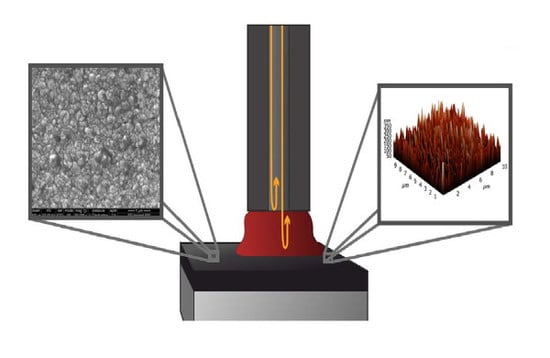Nitrogen-Doped Diamond Film for Optical Investigation of Hemoglobin Concentration
Abstract
:1. Introduction
2. Experimental Section
2.1. Materials and Measurement System
2.1.1. Growth of Nitrogen-Doped Diamond (NDD) Film
2.1.2. Fiber Optic Measurement System
3. Diamond Film Surface and Structure Investigation
4. Result
5. Conclusions
Acknowledgments
Author Contributions
Conflicts of Interest
References
- Sarada, B.V.; Rao, T.N.; Tryk, D.A.; Fujishima, A. Electrochemical Oxidation of Histamine and Serotonin at Highly Boron-Doped Diamond Electrodes. Anal. Chem. 2000, 72, 1632–1638. [Google Scholar] [CrossRef] [PubMed]
- Shang, F.; Liu, Y.; Hrapovic, S.; Glennon, J.D.; Luong, J.H. Selective detection of dopamine using a combined permselective film of electropolymerized (poly-tyramine and poly-pyrrole-1-propionic acid) on a boron-doped diamond electrode. Analyst 2009, 134, 519–527. [Google Scholar] [CrossRef] [PubMed]
- Stotter, J.; Haymond, S.; Zak, J.K.; Show, Y.; Cvackova, Z.; Swain, G.M. Optically Transparent Diamond Electrodes for UV-Vis and IR spectroelectrochemistry. Interface 2003, 12, 33–38. [Google Scholar]
- Sobaszek, M.; Skowroński, Ł.; Bogdanowicz, R.; Siuzdak, K.; Cirocka, A.; Zięba, P.; Gnyba, M.; Naparty, M.; Gołuński, Ł.; Płotka, P. Optical and electrical properties of ultrathin transparent nanocrystalline boron-doped diamond electrodes. Opt. Mater. 2015, 42, 24–34. [Google Scholar] [CrossRef]
- Murib, M.S.; Tran, A.Q.; De Ceuninck, W.; Schöning, M.J.; Nesládek, M.; Serpengüzel, A.; Wagner, P. Analysis of an optical biosensor based on elastic light scattering from diamond-, glass-, and sapphire microspheres. Phys. Status Solidi A 2012, 209, 1804–1810. [Google Scholar] [CrossRef]
- Lee, J.; Park, S.-M. Direct electrochemical assay of glucose using boron-doped diamond electrodes. Anal. Chim. Acta 2005, 545, 27–32. [Google Scholar] [CrossRef]
- Zimmer, A.; Williams, O.A.; Haenen, K.; Terryn, H. Optical properties of heavily boron-doped nanocrystalline diamond films studied by spectroscopic ellipsometry. Appl. Phys. Lett. 2008, 93, 131910. [Google Scholar] [CrossRef]
- Swain, G.M. The use of CVD diamond thin films in electrochemical systems. Adv. Mater. 1994, 6, 388–392. [Google Scholar] [CrossRef]
- Bogdanowicz, R. Characterization of optical and electrical properties of transparent conductive boron-doped diamond thin films grown on fused silica. Metrol. Meas. Syst. 2014, 21. [Google Scholar] [CrossRef]
- Gajewski, W.; Achatz, P.; Williams, O.A.; Haenen, K.; Bustarret, E.; Stutzmann, M.; Garrido, J.A. Electronic and optical properties of boron-doped nanocrystalline diamond films. Phys. Rev. B 2009, 79, 045206. [Google Scholar] [CrossRef]
- Niedziałkowski, P.; Bogdanowicz, R.; Zięba, P.; Wysocka, J.; Ryl, J.; Sobaszek, M.; Ossowski, T. Melamine-modified Boron-doped Diamond towards Enhanced Detection of Adenine, Guanine and Caffeine. Electroanalysis 2016, 28, 211–221. [Google Scholar] [CrossRef]
- Solomon, E.P.; Berg, L.R.; Martin, D.W.; Villee, C.A. Biologia, 1st ed.; Multico Oficyna Wydawnicza: Warsaw, Poland, 1996; ISBN 83-7073-090-6. [Google Scholar]
- Sawicki, W.; Malejczyk, J. Histologia; PZWL: Warsaw, Poland, 2012; ISBN 978-83-200-4349-5. [Google Scholar]
- Harvey, J.W. Atlas of Veterinary Hematology: Blood and Bone Marrow of Domestic Animals; W.B. Saunders: Philadelphia, PA, USA, 2001; ISBN 13: 978-0-7216-6334-0. [Google Scholar]
- Schaefer, D.M.W. Veterinary Hematology: A Diagnostic Guide and Color Atlas; Harvey, J.W., Ed.; Elsevier Saunders: St. Louis, MO, USA, 2012; ISBN 9781-4377-0173-9. [Google Scholar]
- Weiss, D.J.; Wardrop, K.J. Schalm’s Veterinary Hematology, 6th ed.; Wiley-Blackwell Publishing: Ames, IA, USA, 2010; pp. 120–170, 799–803. ISBN 978-0-8138-1798-9. [Google Scholar]
- Thrall, M.A.; Weiser, G.; Allison, R.W.; Campbell, T.W. Veterinary Hematology and Clinical Chemistry, 2nd ed.; Wiley & Sons: New York, NY, USA, 2012; ISBN 978-0-8138-1027-0. [Google Scholar]
- Kruusma, J.; Banks, C.E.; Compton, R.G. Mercury-free sono-electroanalytical detection of lead in human blood by use of bismuth-film-modified boron-doped diamond electrodes. Anal. Bioanal. Chem. 2004, 379, 700–706. [Google Scholar] [CrossRef] [PubMed]
- Zhang, J.; Oyama, M. Electroanalysis of myoglobin and hemoglobin with a boron-doped diamond electrode. Microchem. J. 2004, 78, 217–222. [Google Scholar] [CrossRef]
- Auciello, O.; Sumant, A.V. Status review of the science and technology of ultrananocrystalline diamond (UNCD™) films and application to multifunctional devices. Diam. Relat. Mater. 2010, 19, 699–718. [Google Scholar] [CrossRef]
- Bhattacharyya, S.; Auciello, O.; Birrell, J.; Carlisle, J.A.; Curtiss, L.A.; Goyette, A.N.; Gruen, D.M.; Krauss, A.R.; Schlueter, J.; Sumant, A.; et al. Synthesis and characterization of highly-conducting nitrogen-doped ultrananocrystalline diamond films. Appl. Phys. Lett. 2001, 79, 1441–1443. [Google Scholar] [CrossRef]
- Williams, O.A.; Daenen, M.; D’Haen, J.; Haenen, K.; Maes, J.; Moshchalkov, V.V.; Nesládek, M.; Gruen, D.M. Comparison of the growth and properties of ultrananocrystalline diamond and nanocrystalline diamond. Diam. Relat. Mater. 2006, 15, 654–658. [Google Scholar] [CrossRef]
- Sankaran, K.J.; Tai, N.H.; Lin, I.N. Microstructural evolution of diamond films from CH4/H2/N2 plasma and their enhanced electrical properties. J. Appl. Phys. 2015, 117, 075303. [Google Scholar] [CrossRef]
- Majchrowicz, D.; Kosowska, M.; Struk, P.; Jędrzejewska-Szczerska, M. Tailoring the Optical Parameters of Optical Fiber Interferometer With Dedicated Boron-Doped Nanocrystalline Diamond Thin Film. Phys. Status Solidi A 2017, 214. [Google Scholar] [CrossRef]
- Ferrari, A.C.; Robertson, J. Origin of the 1150 cm−1 Raman mode in nanocrystalline diamond. Phys. Rev. B 2001, 63, 121405. [Google Scholar] [CrossRef]
- Sobaszek, M.; Siuzdak, K.; Skowroński, Ł.; Bogdanowicz, R.; Pluciński, J. Optically transparent boron-doped nanocrystalline diamond films for spectroelectrochemical measurements on different substrates. IOP Conf. Ser. Mater. Sci. Eng. 2016, 104, 012024. [Google Scholar] [CrossRef]
- Michler, J.; von Kaenel, Y.; Stiegler, J.; Blank, E. Complementary application of electron microscopy and micro-Raman spectroscopy for microstructure, stress, and bonding defect investigation of heteroepitaxial chemical vapor deposited diamond films. J. Appl. Phys. 1998, 83, 187–197. [Google Scholar] [CrossRef]
- Ferrari, A.C.; Robertson, J. Resonant Raman spectroscopy of disordered, amorphous, and diamondlike carbon. Phys. Rev. B 2001, 64, 075414. [Google Scholar] [CrossRef]
- Shalini, J.; Sankaran, K.J.; Chen, H.-C.; Lee, C.-Y.; Tai, N.-H.; Lin, I.-N. Mediatorless N2 incorporated diamond nanowire electrode for selective detection of NADH at stable low oxidation potential. Analyst 2014, 139, 778–785. [Google Scholar] [CrossRef] [PubMed]
- Vlasov, I.I.; Ralchenko, V.G.; Goovaerts, E.; Saveliev, A.V.; Kanzyuba, M.V. Bulk and surface-enhanced Raman spectroscopy of nitrogen-doped ultrananocrystalline diamond films. Phys. Status Solidi A 2006, 203, 3028–3035. [Google Scholar] [CrossRef]
- Jedrzejewska-Szczerska, M.; Gnyba, M.; Kosmowski, B. Low-Coherence Fibre-Optic Interferometric Sensors. Acta Phys. Pol. A 2011, 120, 621–662. [Google Scholar] [CrossRef]
- Grattan, K.T.V.; Meggitt, B.T. Optical Fiber Sensor Technology; Springer: Dordrecht, The Netherlands, 1995; pp. 441–459. ISBN 978-94-010-4530-8. [Google Scholar]
- Milewska, D.; Karpienko, K.; Jędrzejewska-Szczerska, M. Application of thin diamond films in low-coherence fiber-optic Fabry Pérot displacement sensor. Diam. Relat. Mater. 2016, 64, 169–176. [Google Scholar] [CrossRef]
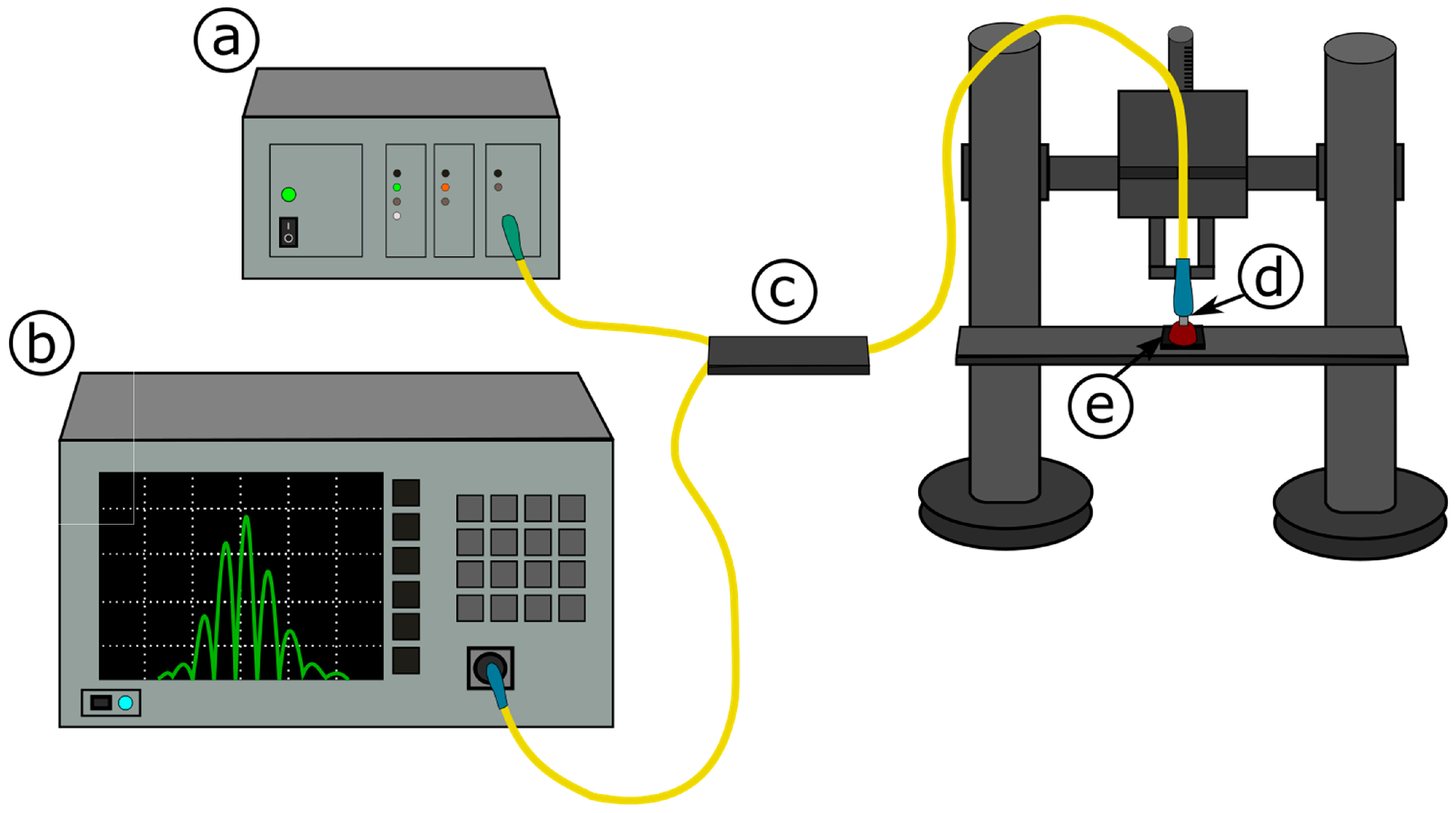
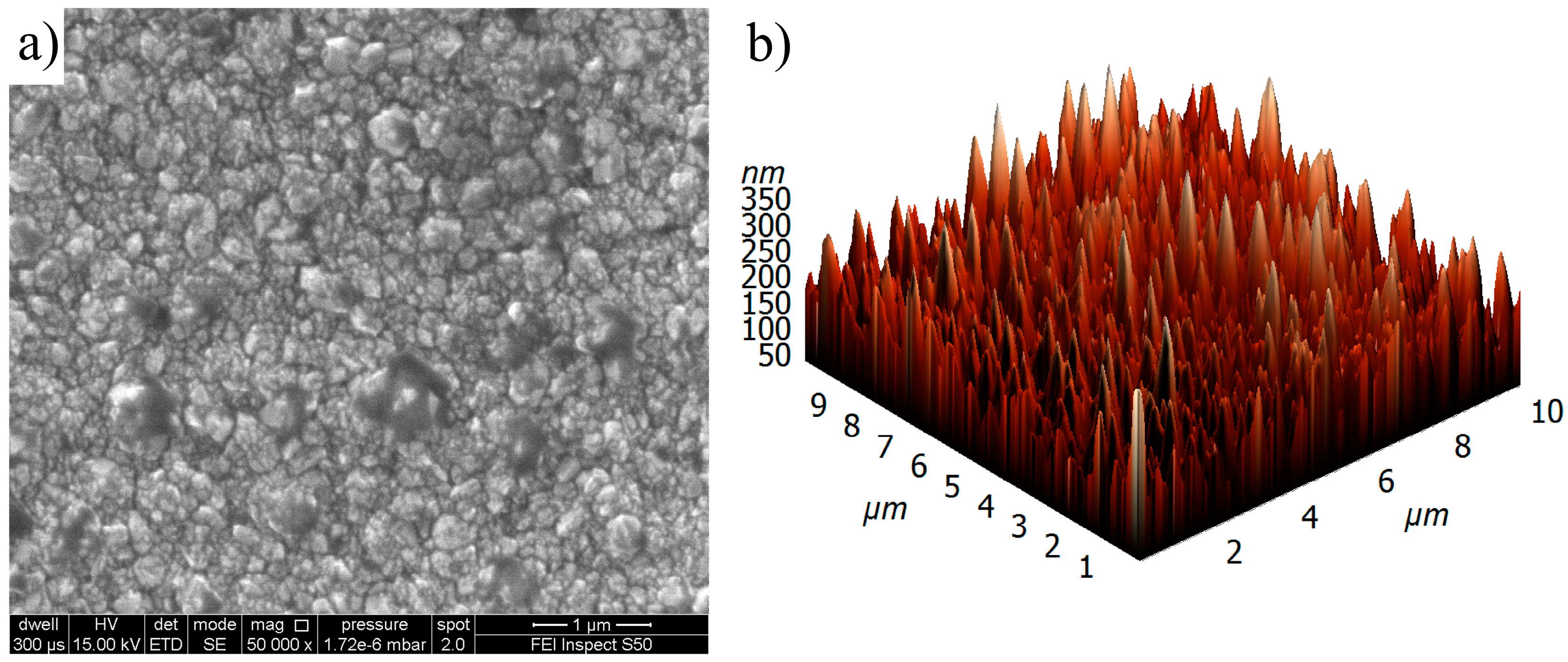
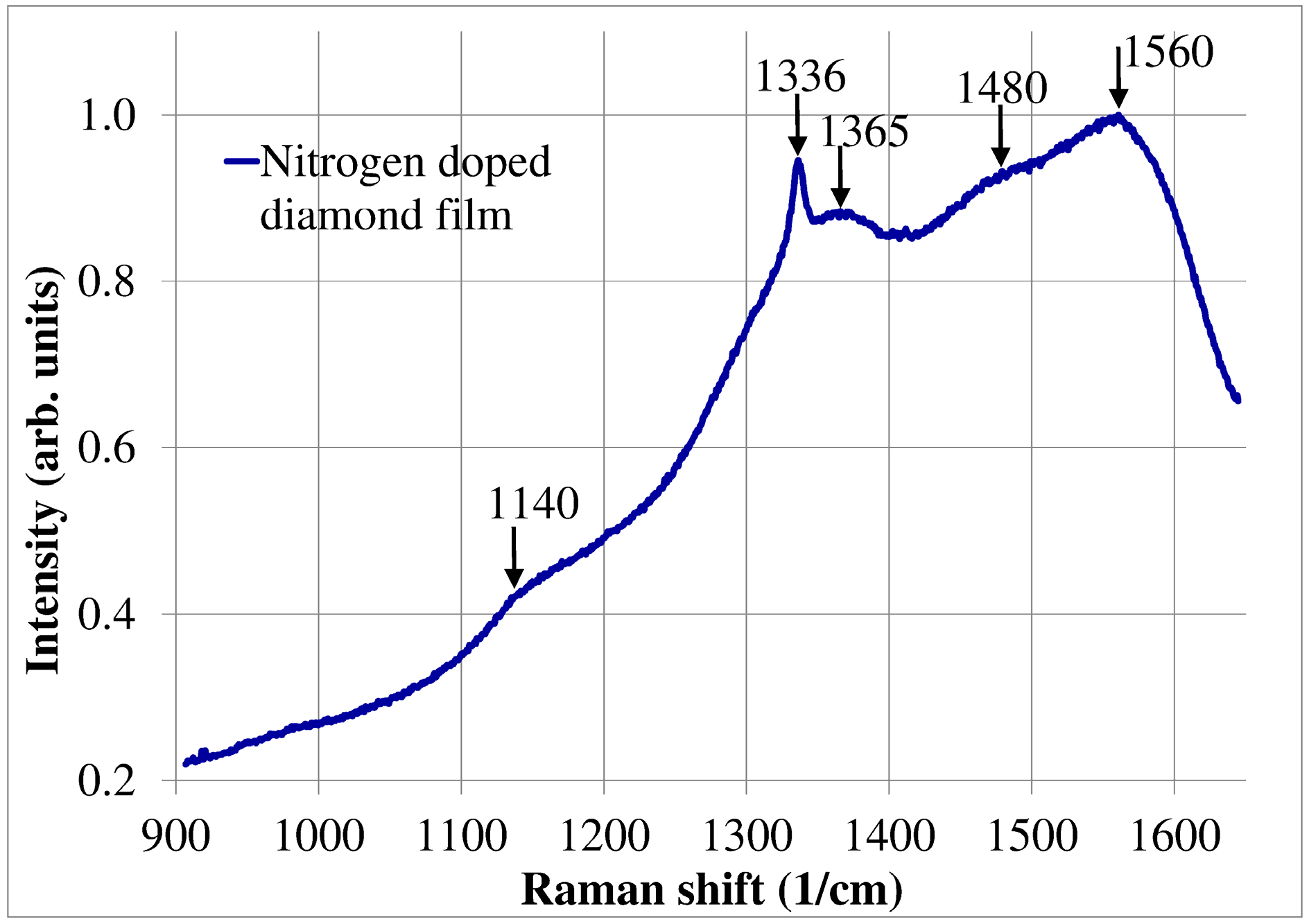
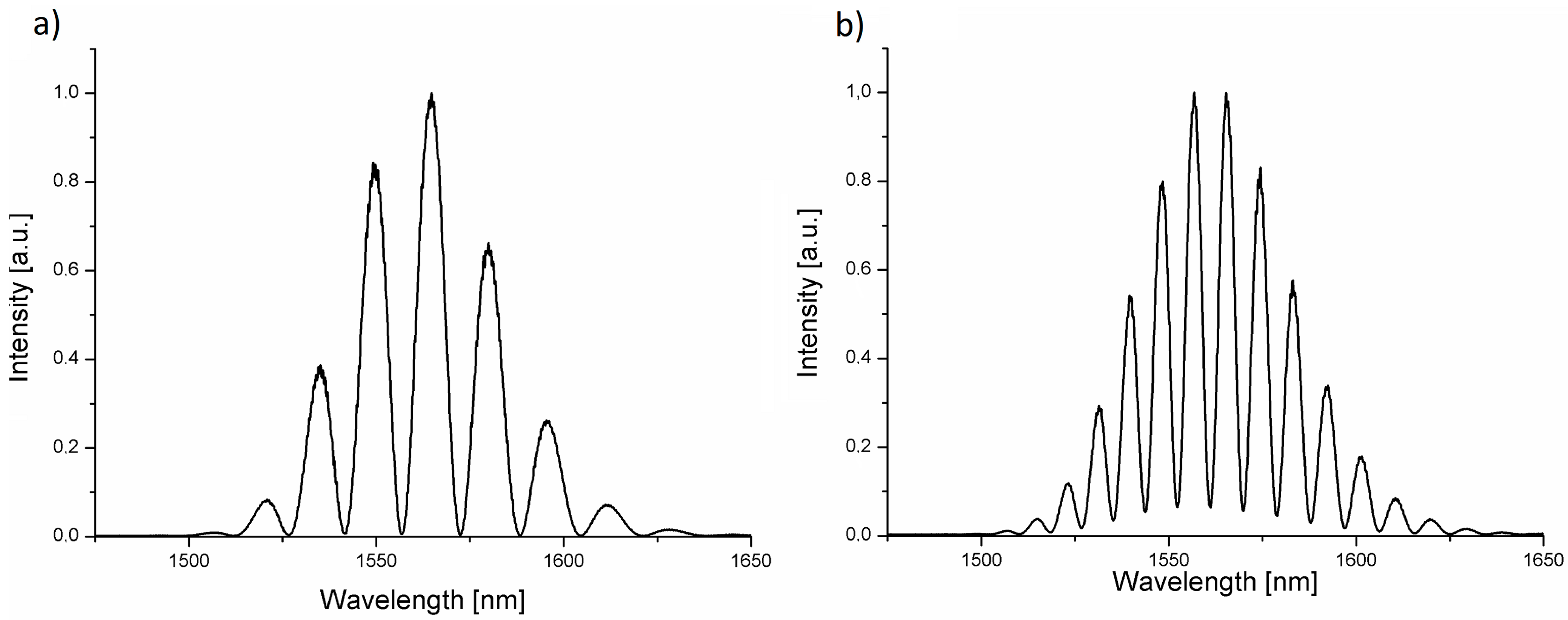
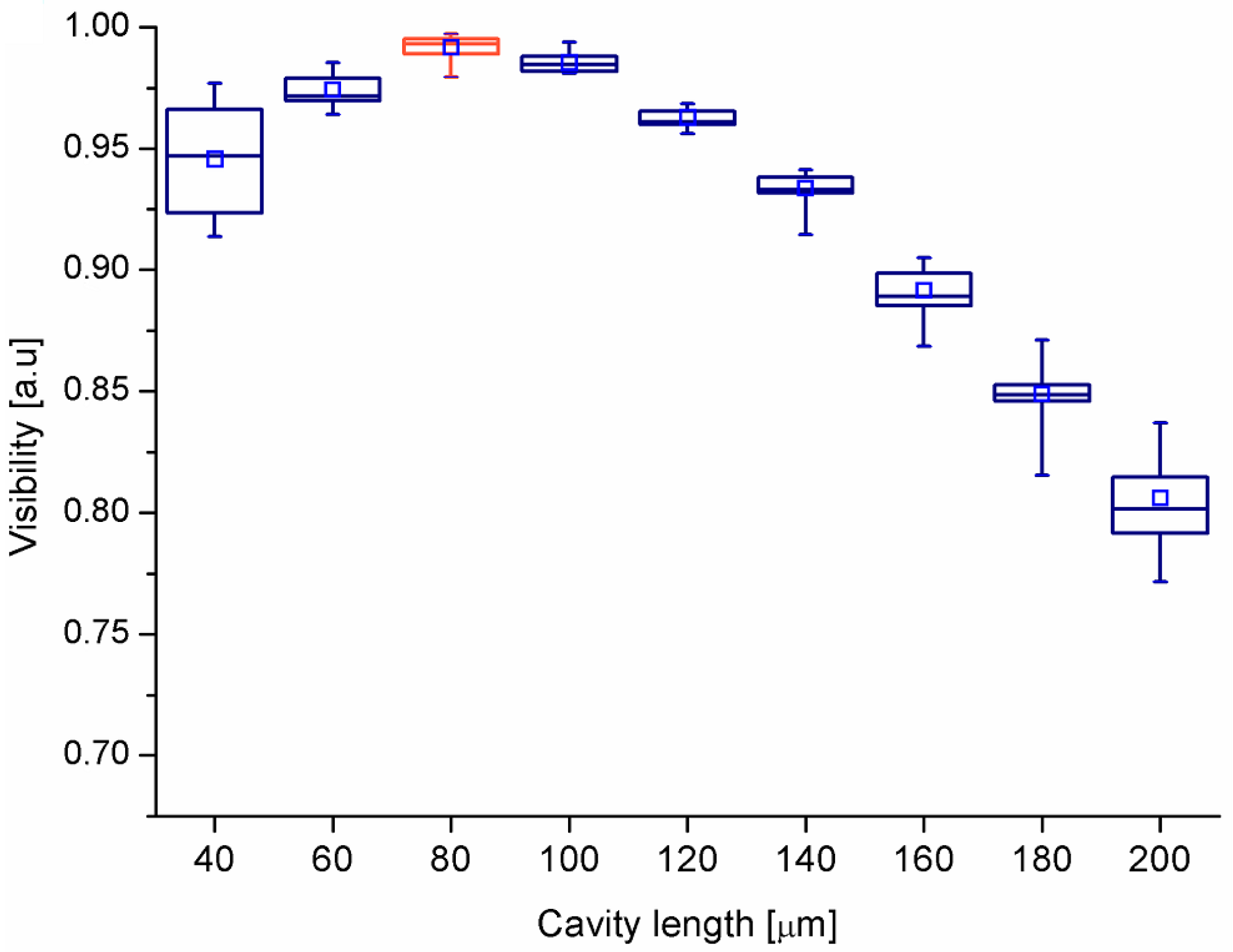
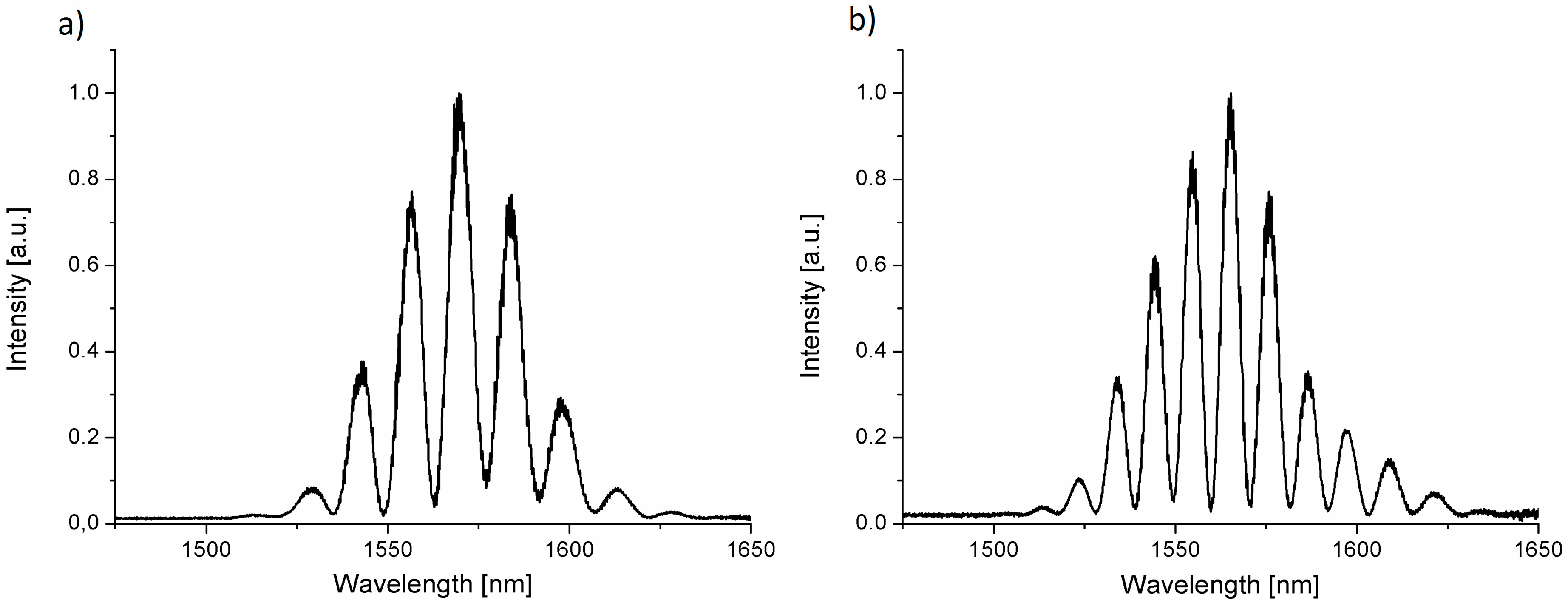
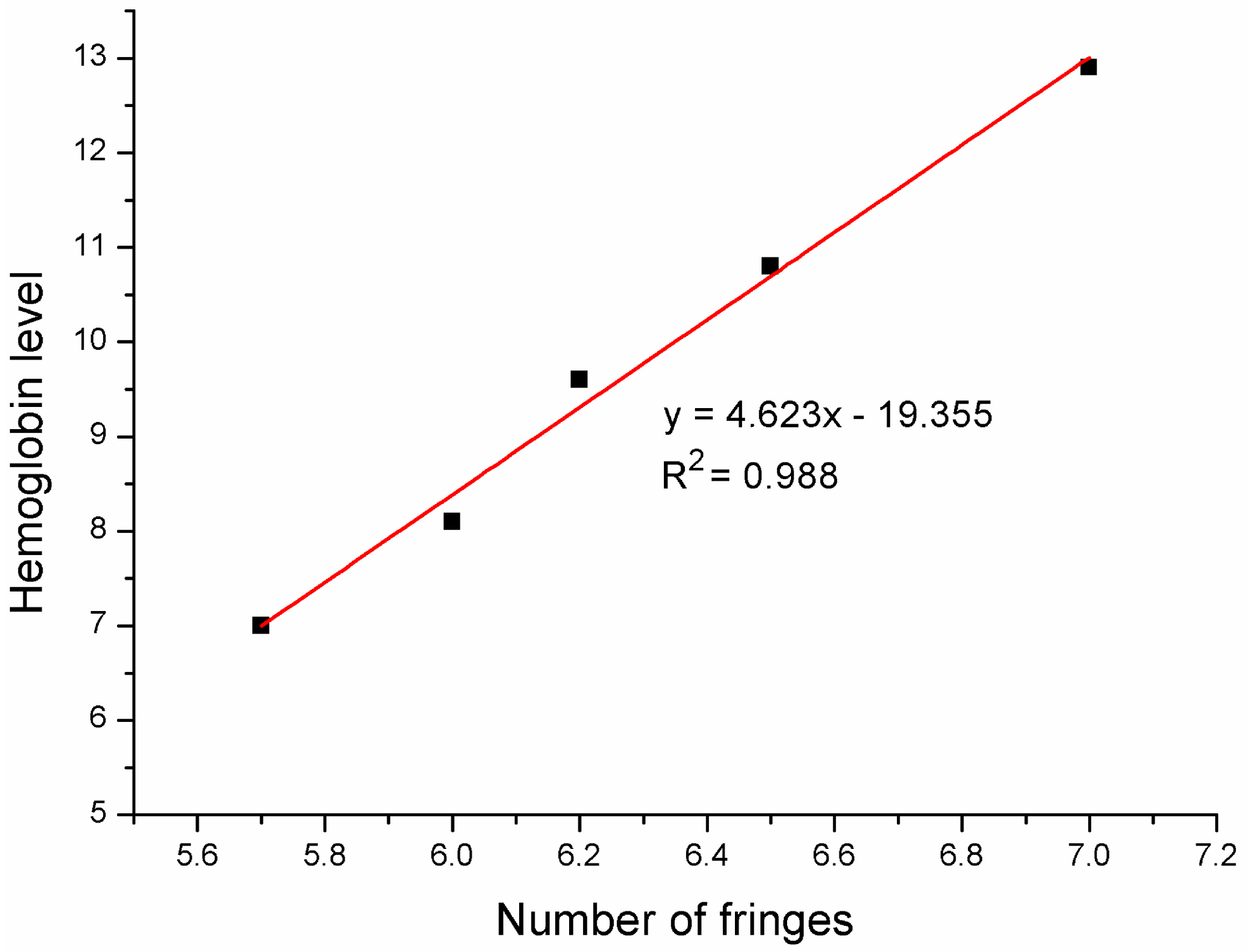
© 2018 by the authors. Licensee MDPI, Basel, Switzerland. This article is an open access article distributed under the terms and conditions of the Creative Commons Attribution (CC BY) license (http://creativecommons.org/licenses/by/4.0/).
Share and Cite
Majchrowicz, D.; Kosowska, M.; Sankaran, K.J.; Struk, P.; Wąsowicz, M.; Sobaszek, M.; Haenen, K.; Jędrzejewska-Szczerska, M. Nitrogen-Doped Diamond Film for Optical Investigation of Hemoglobin Concentration. Materials 2018, 11, 109. https://doi.org/10.3390/ma11010109
Majchrowicz D, Kosowska M, Sankaran KJ, Struk P, Wąsowicz M, Sobaszek M, Haenen K, Jędrzejewska-Szczerska M. Nitrogen-Doped Diamond Film for Optical Investigation of Hemoglobin Concentration. Materials. 2018; 11(1):109. https://doi.org/10.3390/ma11010109
Chicago/Turabian StyleMajchrowicz, Daria, Monika Kosowska, Kamatchi J. Sankaran, Przemysław Struk, Michał Wąsowicz, Michał Sobaszek, Ken Haenen, and Małgorzata Jędrzejewska-Szczerska. 2018. "Nitrogen-Doped Diamond Film for Optical Investigation of Hemoglobin Concentration" Materials 11, no. 1: 109. https://doi.org/10.3390/ma11010109
APA StyleMajchrowicz, D., Kosowska, M., Sankaran, K. J., Struk, P., Wąsowicz, M., Sobaszek, M., Haenen, K., & Jędrzejewska-Szczerska, M. (2018). Nitrogen-Doped Diamond Film for Optical Investigation of Hemoglobin Concentration. Materials, 11(1), 109. https://doi.org/10.3390/ma11010109





